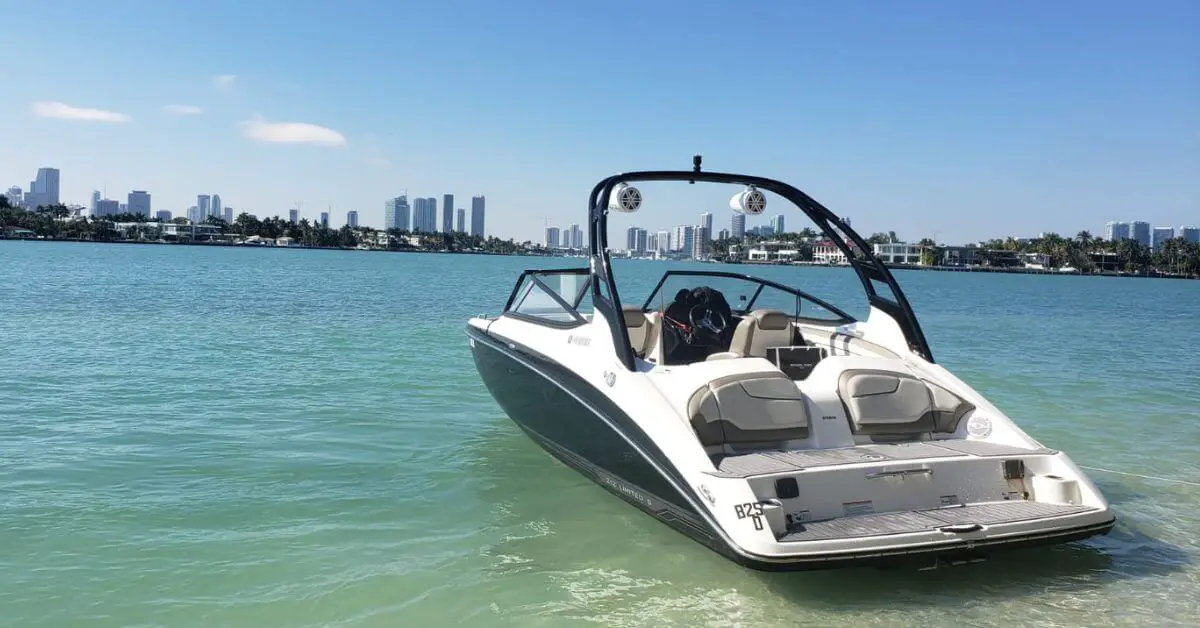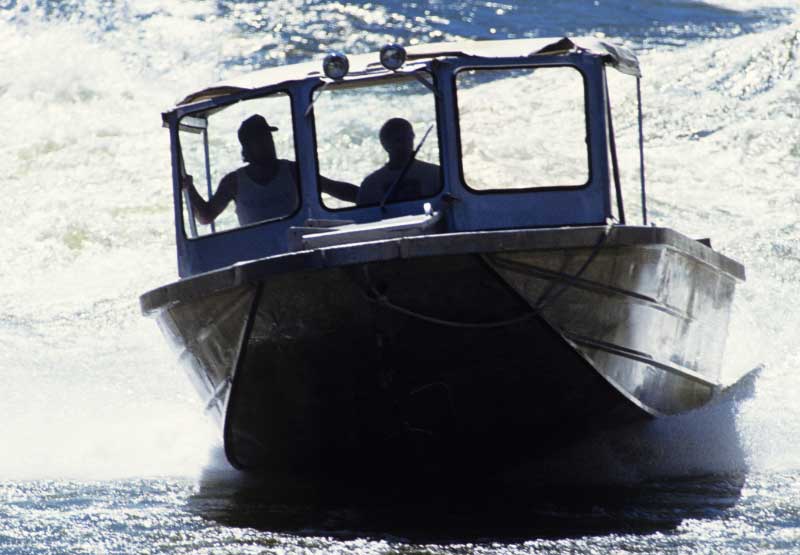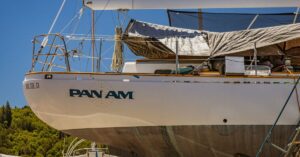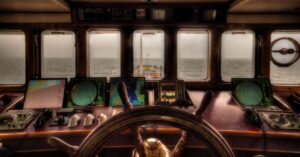Jet boats are thrilling, high-speed watercraft making waves in the boating industry. Unlike conventional boats, a jet boat uses powerful water jets instead of propellers to propel themselves forward.
Jet propulsion offers many advantages, such as fast acceleration, easy maneuverability, and the ability to navigate shallow waterways. Moreover, they create less noise and vibration, require low maintenance, and are eco-friendly. This comprehensive guide will explore what a jet boat is, how it works, and its benefits.
We will cover different types of jet boats, their advantages and disadvantages, and how they compare to traditional boats. We will also discuss safety measures and the future of jet boats. If you’re a water lover or an adrenaline junkie, you’ve come to the right place! Let’s dive deep into the world of jet boats and discover the excitement they have to offer.
How Does a Jet Boat Work? Principle of Jet Drive Propulsion System
The principle of jet propulsion is based on Sir Isaac Newton’s third law of motion, which states, “For every action, there is an equal and opposite reaction.” Applied to jet propulsion, it means that when a fluid (such as water) is forced out of a nozzle, the resulting force will move the object (such as a jet boat) in the opposite direction.
In other words, the jet boat’s engine sucks in water from underneath it and pushes it out through a nozzle at the back. This creates a high-pressure water jet that propels the boat forward. By changing the direction of the nozzle or adjusting the amount of water being forced out, the operator can steer the boat in any direction.
Jet propulsion offers several advantages over traditional propeller propulsion, including better acceleration, higher top speed, and greater maneuverability in shallow waters.
How does the engine drive the water jet?
The engine in a jet boat drives the water jet through a system of impellers and stators. When the engine is turned on, it spins the impellers, which draw water from under the boat and then increase its velocity as it passes through the stators.
The high-pressure water is then expelled through a nozzle at the rear of the boat, generating thrust that propels the boat forward. By adjusting the direction of the nozzle or the amount of water expelled, the operator can steer the boat in any direction.
Not all jet boats have the same propulsion system, and some may use different methods to drive the water jet, such as axial flow or mixed flow designs. However, using an impeller to draw in water and expel it through a nozzle to create thrust remains the same.
Jet Boats vs. Outboard Boats vs. Prop Boats
Jet boats, outboard boats, and prop boats are different types of watercraft with distinct characteristics. Here’s a comparison of these three types:
1. Jet Boats
- Propulsion: Jet boats use a jet propulsion system, which draws water from beneath the boat and expels it at high pressure through a nozzle, creating thrust.
- Maneuverability: Jet boats have excellent maneuverability due to the ability to redirect the water jet. They can make tight turns and operate in shallow waters.
- Safety: Jet boats have no exposed propeller, making them safer for people in the water or when navigating areas with swimmers.
- Performance: Jet boats typically offer quick acceleration, high top speeds, and good handling. They can perform well in various water conditions.
- Fuel Efficiency: Jet boats are less fuel-efficient than outboard or prop boats due to the energy required to generate high-pressure water jets.
2. Outboard Boats:
- Propulsion: Outboard boats have an outboard motor mounted on the transom, which consists of an engine, propeller, and steering controls. The propeller pushes the water backward, propelling the boat forward.
- Versatility: Outboard motors are available in various sizes and can be easily replaced or upgraded. They are versatile and can be used on various boat types.
- Fuel Efficiency: Outboard motors have improved fuel efficiency compared to jet boats.
- Maintenance: Outboard motors generally require regular maintenance, including propeller checks, oil changes, and periodic servicing.
3. Prop Boats (Sterndrive or Inboard):
- Propulsion: Prop boats utilize a stern drive (inboard-outboard) or an inboard engine with a submerged propeller mounted beneath the hull.
- Maneuverability: Prop boats offer good maneuverability, with the ability to steer via the propeller’s direction and the rudder in inboard configurations.
- Speed and Performance: Prop boats can provide excellent speed and performance, particularly in open water or longer distances.
- Interior Space: Prop boats typically have larger and more spacious interiors than jet boats, as the engine is outside the main living space.
Types of Jet Boats
There are several different types of jet boats available on the market. Some of these include:
1. Recreational Jet Boats
These boats are designed for leisure activities such as skiing, wakeboarding, and cruising. They come in various sizes and configurations to accommodate different recreational purposes. They may feature seating capacity, storage compartments, entertainment systems, swim platforms, and towers for pulling skiers or wakeboarders.
2. Fishing Jet Boats
These boats are designed with features such as live wells, rod holders, and fish boxes for anglers. They can navigate shallow waters, making them ideal for fishing in rivers and streams.
3. Racing Jet Boats
Racing jet boats are specifically built for high-speed competitions and racing events. They are designed to be lightweight, streamlined, and agile, with powerful engines that deliver exceptional speed and acceleration. Racing jet boats often have specialized hull designs and advanced technology to maximize performance and maneuverability on the water.
4. Rescue Jet Boats
These boats are used by emergency responders such as coast guards and police departments for water rescue operations. They are designed with features such as dive doors and rescue platforms.
5. Personal Watercrafts (PWC)
These are small, jet-propelled vessels designed for one or two persons to ride or stand on. PWCs are ideal for activities such as wave jumping and short-distance cruising.
6. Military Jet Boats
Military jet boats may be utilized for riverine operations, waterway patrols, or special forces missions. They are often designed with reinforced hulls and advanced navigation systems and can be equipped with mounted weapons or surveillance equipment.
7. Commercial jet boats
These are used for various purposes: transportation, tour operations, and search and rescue missions. They are built for durability, efficiency, and safety and can be customized to meet specific commercial needs.
Advantages and Disadvantages of Owning a Jet Boat
It’s important to consider these disadvantages and the advantages of jet boats when deciding on the type of boat that best suits your needs and preferences.
Advantages of Jet Boats
1. Improved Maneuverability
Jet boats offer excellent maneuverability because they can quickly change direction and navigate tight spaces. The absence of a propeller allows them to make sharp turns and pivot on the spot, making them well-suited for activities like water sports and navigating crowded areas
2. Shallow Water Capability
Jet boats are designed with a shallow draft, allowing them to operate in shallow waters where traditional propeller-driven boats may struggle. This makes them ideal for exploring rivers, lakes, and other areas with limited depth.
3. Reduced Risk of Damage
The jet boat design eliminates the need for an exposed propeller and lower unit. This reduces the risk of damage from running aground or hitting underwater objects, such as rocks and logs. It also makes jet boats safer for swimmers and marine life by eliminating the risk of contact with a spinning propeller.
4. Increased Safety
Jet boats offer enhanced safety features. The absence of an exposed propeller reduces the risk of injuries to swimmers, marine life, and the boat itself. Jet boats can also stop or reverse quickly without shifting gears or adjusting a propeller, enhancing safety in emergency situations or when maneuvering in crowded areas.
5. Fast Speed
Jet boats are known for their exceptional speed and acceleration. Their jet propulsion systems, which use water jet pumps to propel the boat forward, can achieve high speeds quickly, providing an exhilarating boating experience.
6. Less Vibration
Jet boats generally produce less vibration compared to propeller-driven boats. The absence of a propeller reduces vibration, and the water jet pump tends to be quieter, resulting in a more comfortable and enjoyable boating experience.
7. Low Maintenance
Jet propulsion systems are simpler in design and typically require less maintenance than traditional propeller-driven systems. There are no propellers, lower units, or outdrives to service or replace, reducing maintenance costs and time spent on upkeep.
8. Eco-Friendly
Jet boats are considered to be more eco-friendly compared to propeller-driven boats. They have a smaller carbon footprint as they typically have cleaner-burning engines, produce less exhaust emissions, and create less noise pollution, minimizing their environmental impact.
Disadvantages of Jet Boats
1. Higher RPM and Engine Wear
Jet boats operate at higher RPM levels, which can put more strain on the engine. The continuous high RPMs can lead to faster wear and tear on the engine components, potentially requiring more frequent maintenance or repairs.
2. Fuel Consumption
Jet boats tend to have higher fuel consumption than other boats. The design of the jet propulsion system requires more power to generate thrust, resulting in increased fuel usage.
3. Noise Levels
When jet boats reach speeds over 30 MPH, they can become significantly louder than other boats. The intense noise can disrupt nearby boats, wildlife, and people enjoying the water. It’s important to consider noise pollution and be mindful of it while operating a jet boat.
4. Pump Intake Clogging
The pump intake of a jet boat can easily get clogged by debris, such as weeds, small branches, or rocks. When the pump intake is obstructed, it affects the boat’s performance and may require stopping to clear the intake, causing inconvenience during the boating experience.
5. Risk of Rope or Line Entanglement
Stray ropes or dock lines can accidentally be drawn into the pump intake of a jet boat. This can lead to damage or malfunction of the pump and may require repairs. It is crucial to be cautious and avoid any loose objects near the pump intake area.
6. Less Directional Stability
Jet boats have less directional stability at low speeds than boats with propellers, especially in windy conditions. This can make it more challenging to maneuver the boat precisely, making docking or navigating tight spaces more difficult.
7. Shallow Water Limitations
Jet boats are more susceptible to shallow water restrictions. Because the jet drive relies on water intake, it can be easily damaged if it comes into contact with shallow or debris-filled waters. This can limit the areas where jet boats can safely operate.
8. Limited Reverse Thrust
Jet boats typically have limited or less effective reverse thrust than boats with propellers. This can make it trickier to navigate in tight spaces or perform precise maneuvers, especially when trying to stop or back up quickly.
Conclusion
Jet boats offer a thrilling and versatile boating experience with several advantages that set them apart from traditional propeller-driven boats. Their speed, maneuverability, and ability to operate in shallow waters make them ideal for various activities such as water sports, exploring rivers, and navigating crowded areas.
Furthermore, jet boats provide a safer boating experience with reduced risks of injuries to swimmers, marine life, and the boat itself. Their low maintenance requirements and eco-friendly nature make them an attractive option for boating enthusiasts.
However, it is essential to prioritize safety when jet boating. Having the necessary safety equipment, following safe boating practices, and being aware of common accidents can ensure a safe and enjoyable experience on the water.
Whether you’re an adrenaline seeker or someone who appreciates the practicality and versatility of jet boats, they offer an exciting way to explore the waterways while enjoying speed and maneuverability. With the right equipment, knowledge, and adherence to safety guidelines, jet boating can provide endless fun and memorable moments on the water.
So, why wait? Take the plunge and experience the thrill of jet boating for yourself!






